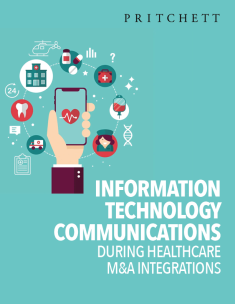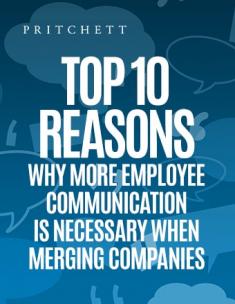Infrastructure
What systems will change and when?
Our technology integration roadmap involves a phased migration over 12 months. We will maintain parallel systems during initial transition to ensure operational continuity and minimize disruption.
How will current technology platforms be integrated or replaced?
We are conducting a technology assessment to determine the most robust and efficient platforms. Each technology platform will be evaluated against key criteria including performance, scalability, security, and alignment with our merged organization's strategic objectives.
Will there be any disruption to current IT services?
We will minimize service interruptions by implementing protocols that include 24/7 technical support during migrations, comprehensive testing protocols before full system cutover, and backup and contingency plans for potential unexpected challenges.
How will day-to-day technology operations be maintained during integration?
A dedicated transition team will establish clear communication channels for addressing immediate technical needs and redundant support mechanisms to ensure uninterrupted service.
Employees
What changes will occur in the IT department's organizational structure?
Our IT organizational restructuring will establish clear leadership and reporting structures and maintain a transparent selection process for leadership roles.
What opportunities exist for professional development?
There will be cross-training opportunities, mentorship and knowledge transfer initiatives, and career development pathways aligned with emerging technological trends.
Patients
How will we protect personal health information?
We will encrypt all personal health information at rest and in transit, implement strict access controls with multi-factor authentication, and comply with all HIPAA and state-level privacy regulations.
What technology improvements are you making?
We are developing more user-friendly patient portals, implementing telehealth expansion capabilities, investing in AI-assisted diagnostic support tools, enhancing mobile access to personal health records, and improving system interoperability for care coordination.
Security and Access
Will email addresses and login credentials change?
Employees can expect a three-month period where both legacy and new email systems remain active. There will be clear communication about new email domain and login procedures and preservation of existing email archives and contact lists.
What new security protocols will be implemented?
We will implement multi-factor authentication across all systems and standardize and align security policies across both organizations.
How will sensitive company data be protected during the integration?
There will be encrypted data transfer protocols and a third-party cybersecurity audit during the integration. We will comply with all relevant data protection regulations.
Are there any changes to data governance procedures?
We will establish a unified data governance framework that consolidates best practices from both organizations and implements centralized data management protocols.
Investors
What is our technology strategy?
We plan to enhance digital patient experience through modern, intuitive platforms, improve operational efficiency through technology investments and maintain a robust cybersecurity and compliance infrastructure.
How are we managing technology risks?
We will conduct annual comprehensive cybersecurity assessments, continuously monitor system vulnerabilities, maintain HIPAA and HITRUST compliance, and develop incident response and business continuity plans.
Partners/Vendors
What are our technology integration capabilities?
Our technology ecosystem supports multiple integration standards including HL7 version 2.x and FHIR for clinical data exchange, RESTful API interfaces, secure cloud-based integration platforms, support for DICOM in medical imaging systems, and flexible middleware capabilities to connect diverse healthcare applications.
How will we ensure data security with partners?
There will be rigorous vendor security assessment protocols, end-to-end encryption for data transmission, and regular security audits of integration points.
Regulatory/Compliance
How will we maintain technology compliance?
There will be annual HIPAA and HITRUST certification assessments, regular internal and external security audits, and proactive technology upgrades to meet evolving requirements.
What cybersecurity measures are in place?
There are advanced firewalls and intrusion detection systems and we will perform regular vulnerability scanning and penetration testing.
Media/Public
How will we use technology to improve healthcare?
We will leverage technology to implement predictive analytics for early disease detection, reduce administrative burden on healthcare providers, and support remote and virtual healthcare delivery.
What emerging technologies are we exploring?
We plan to use artificial Intelligence for diagnostic support, machine learning for personalized treatment recommendations, and advanced telehealth platforms.





